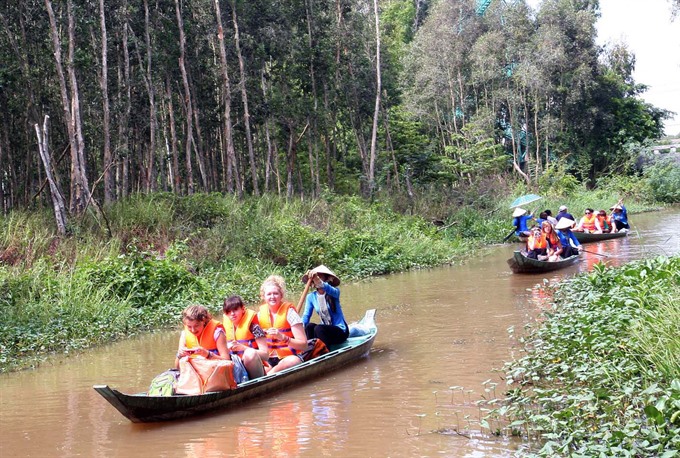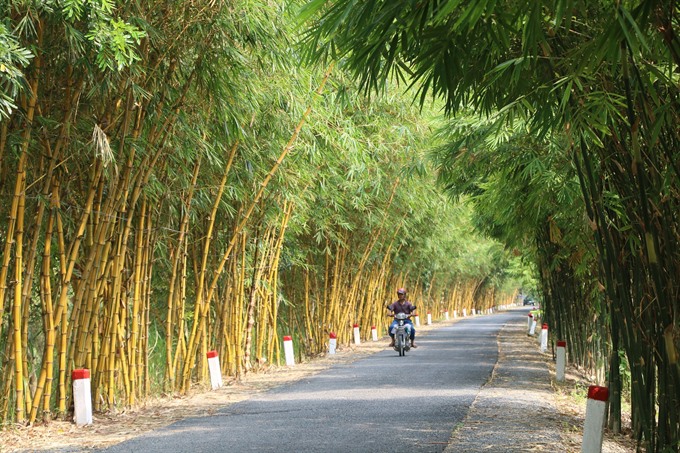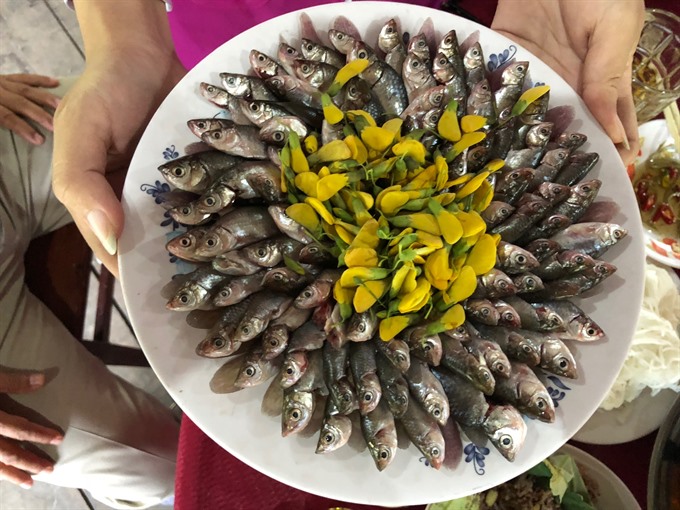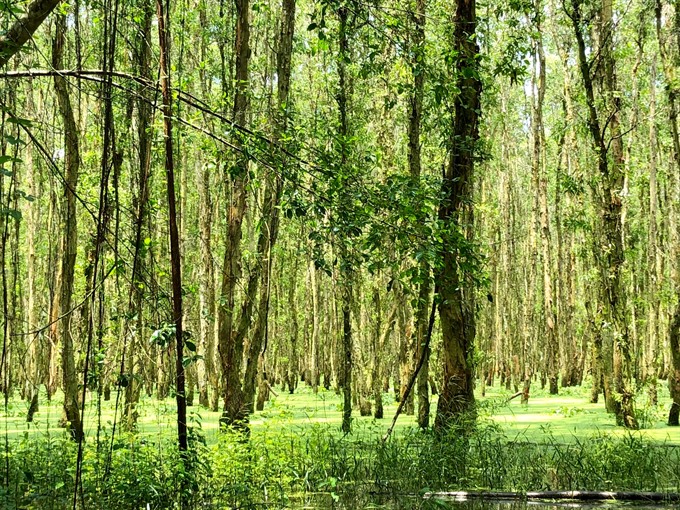Viet Nam News
by Tran Mai Huong
Gao Giong - Cao Lanh in the southern province of Dong Thap was in the middle of the flooding season.
Immense water had overwhelmed the canals, making the Gao Giong Ecology Tourism Site emerge like an oasis on water.
After light rain, the air seemed to clear. The sound of bim bip (moorhen) calling to each other echoed through a forest of tram (myrtle) trees, which were full of white flowers with a sweet scent.
 |
| Popular: Foreign visitors at the site. — VNA/VNS Photo Dinh Hue |
Here and there, dien dien (riverhemp) bloomed full in yellow, in contrast to lotus flowers in purple and pink.
Flocks of birds nested in the trees, and their flapping stirred up an area of water.
Sitting on a wooden boat, I felt peaceful and relaxed.
Duong Ngoc My, a 19-year-old boat woman, rowed us through the maze of channels.
 |
| Natural protection: Bamboo trees line the roads. —VNA/VNS Photo Nguyen Van Tri |
“This is the biggest flood season for the past few years,” she said. “In the dry season, the water is 2m deep in this channel, but today it’s 4m.”
“When the water comes, the people, plants and birds here seem to be revived,” she said.
My possessed a simple beauty and a charming smile of a typical woman from the western region.
She said she wanted to help her parents to earn a living so she had quit school and found a job here inside the ecotourism site.
 |
| Fish dish: A dish of ca linh (small carp), a delicacy of the region in the flood season. — VNS Photos Tran Mai Huong |
Since her childhood, she has visited Cao Lanh City just a few times, and has never even made it to Can Tho City or further.
Through her story, My helped us understand more about the site.
“The name Gao Giong stems from the fact that there are many old gao (nauclea) trees growing here," she said.
People say the site breathes air across the whole of Dong Thap Muoi (Plain of Reeds). The melaleuca forest accounts for 1,700ha, 250ha of which is primitive forest.
 |
| Row your boat: Taking a wooden boat down the channel is peaceful and relaxing. — VNS Photos Tran Mai Huong |
Gao Giong is well-known for its rich flora and fauna. There are 15 species of birds that call it home including white, red and black storks, making Gao Giong the biggest stork garden in the Plain of Reeds.
Beneath the water, you can also find ca loc (snake-headed fish), ca sac (snakeskin gourami), ca lang (hemibagrus) and ca bong (goby).
During the rainy season, schools of ca linh (small carp) swim in from Cambodia, which make for a tasty delicacy.
Our boat travelled along the channel, following other boats carrying tourists around the site.
On the way to the stork garden, we passed immense forests of melaleuca and bamboo. The reflection of the trees on the water created beautiful images.
Journalist Nguyen Van Thi, nicknamed Tam Thi, travelled with us. He joined the revolution against the Americans when he was quite young. He was also part of the Thong tan xa Giai Phong (Liberation News Agency) which gave birth to the Vietnam News Agency in the south.
 |
| Green canopy: The melaleuca forest covers 1,700ha, 250ha of which is primitive forest. — VNS Photos Tran Mai Huong |
“During the war, the melaleuca forest sheltered the liberation troops during various big campaigns,” he recalled.
“At that time, my comrades and I used to travel around the region and lived under the protection and care of patriotic locals, who were willing to sacrifice themselves for the revolution,” he said.
A stork garden appeared as we turned onto the main channel. Thousands of storks were perched in the melaleuca trees, creating an impressive backdrop.
From time to time, they took off in unison, looking for a more comfortable perch.
We took many photos of the stork garden before returning to the dock. At the service centre, a typical lunch of the flood season was waiting for us.
We had baked field rats, baked snake-headed fish, a hot pot of small carp fish, a hot pot of snake, red rice steamed on lotus leaves and wine with forest bee honey.
The rich lunch was an unforgettable memory on this trip, and the dishes seemed like gifts sent from heaven to the people of Gao Giong. — VNS